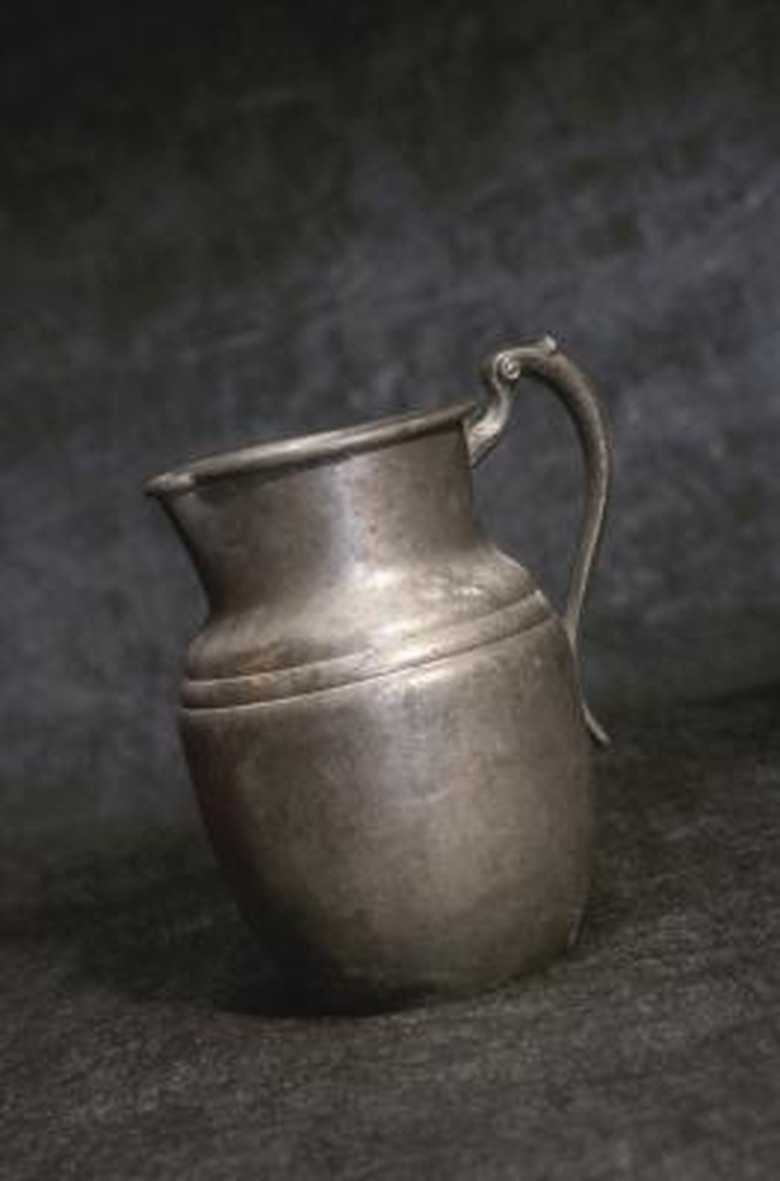What Is The Melting Point Of Pewter?
Pewter is a soft, malleable metal that graces many people's kitchens or jewelry boxes. This traditional metal–among the easiest to work with–is durable, versatile and easy to care for, although its low melting point makes it a poor choice for bakeware. Pewter is an elegant choice for plates, flatware or sturdy mugs.
Composition
Composition
Pewter is a soft, highly malleable metal alloy. Tin comprises the base metal (between 85 and 99 percent), with the remainder consisting of copper (as a hardener) and another metal (usually antimony or bismuth in modern pewter). Until the 1930s, lead was used and it gave pewter a distinctive blue tint. Depending on the exact mix of metals, pewter has a melting point of 225 to 240 C (437 to 464 degrees F).
Uses
Uses
Because of its softness and low melting point, pewter is typically used for candlesticks, tableware and jewelry. It is also commonly used for making replica coins, small metal statuettes and decorative objects. Pewter objects should not be used in places with high heat, including as bakeware in ovens.
Care
Care
Pewter tolerates normal washing with normal household chemicals. To smooth over gouges in the soft metal, a #0000 steel wool pad can be used to gently work the imperfection out of the surface of the metal–buff the damaged area in a circular motion for best results. Avoid prolonged contact with acids as this can weaken or tarnish the metal.
Manufacture
Manufacture
Unique pewter objects are typically made by professional pewtersmiths. These artisans hammer pewter stock into a general shape and then use special lathes to cut or work the metal to its desired shape. They also use molds, pouring liquid metal into a mold and then finishing the piece after it cools.
History
History
Pewter has been in use for more than 2,000 years. However, the metal gained common use after the 1750s in England, when artisans refined their trade to make pewter objects more accessible to common people. The most common uses were for plates, pots and chargers (plate holders), and silversmiths and pewtersmiths often worked hand-in-hand to make complimentary items. The spread of china and pottery as tableware in the 19th century had an impact on the pewter industry; however, interest in pewter objects resurged in the late 20th century.
Cite This Article
MLA
Gillikin, Jason. "What Is The Melting Point Of Pewter?" sciencing.com, https://www.sciencing.com/melting-point-pewter-5436679/. 24 April 2017.
APA
Gillikin, Jason. (2017, April 24). What Is The Melting Point Of Pewter?. sciencing.com. Retrieved from https://www.sciencing.com/melting-point-pewter-5436679/
Chicago
Gillikin, Jason. What Is The Melting Point Of Pewter? last modified March 24, 2022. https://www.sciencing.com/melting-point-pewter-5436679/
